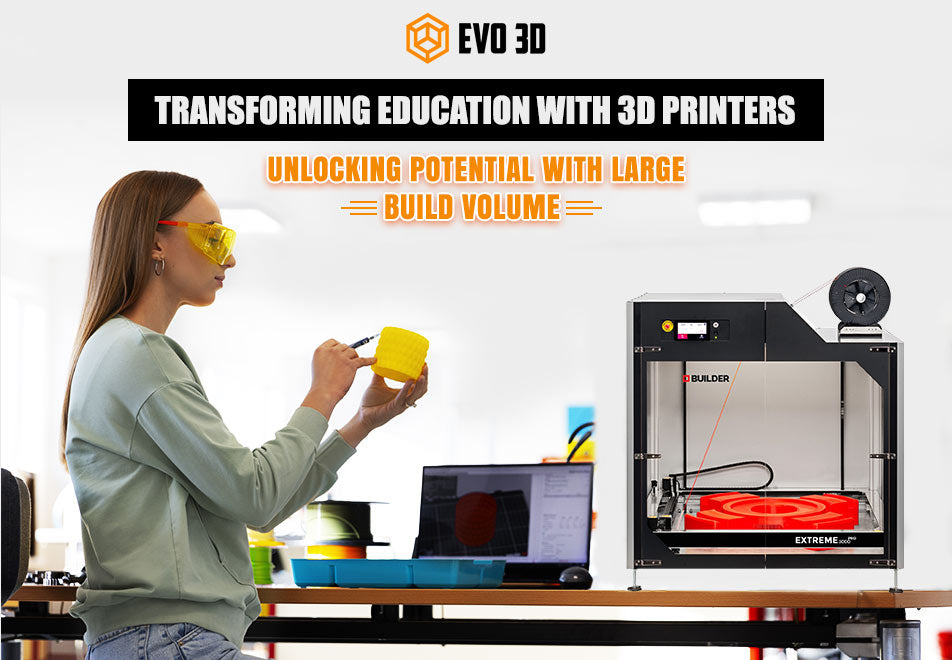Transforming Education with 3D Printers: Unlocking Potential with Large Build Volume

In the field of educational technology, 3D printing is one of the innovative means that provides an efficient and practical approach of teaching, learning as well as assessing students. There are quite a number of 3D printers for education based on build size; however, the ones with larger build volume prove to be worth more based on the maximization of particular educational experiences. Here’s how these advanced machines are changing the face of education and research as we know it.
1. Enhancing Hands-On Learning
One of the major benefits of a large build volume 3D printer for education is creating projects for learning. Large build volume enables students to model an artifact, scientific phenomena, or an engineering prototyping model accurately for printing purposes. For example, in a hypothetical classroom setting, while studying in-depth why Greek columns were built students can physically print out columns and also few more. In science and engineering, they can create and test intricate mechanical systems or anatomical models, which can make abstract concepts more tangible.
2. Fostering Creativity and Innovation
Large build volume 3D printers also play a crucial role in fostering creativity and innovation among students. The availability of large build volume 3D printers helps students be imaginative and come up with creative ways to develop new packaging concepts. There is also a lot of call for students to develop critical thinking skills which determine how far the project can be taken. While they are making their very own model for a science exhibition or taking turns designing a portion of large sculpture, these costly 3D printers come with more than just enhancing beauty by creating artistic hands on functional objects.
3. Facilitating Collaboration
3D printing can both support and encourage working as part of a team and projects which require a rolling base for student requirements will often benefit from a large build volume 3D printer. These printers are helpful in project-based learning since they make it possible for several students to work on various sections of a large model or on group models that might require a lot of room. It is crucial understanding the way ideas are proposed, moved around, and used by members of a team if people want to achieve a defined outcome which in turn enhances the learning process.
4. Real-World Applications
Lastly, the use of large build volume 3D printers also has a relevance in the skills that students will possess in career work readiness. For instance, students doing engineering or architectural courses can make use of these printers to bring some of their ideas to life, which in this case is making models of the various projects they will design. In art and design programs, students can produce large-scale sculptures or installations, preparing them for careers in creative fields. The ability to work with large build volume 3D printers helps bridge the gap between theoretical knowledge and practical application, providing students with valuable hands-on experience.
5. Cost-Effective Prototyping
Even if 3D printers and large build volume printers can be costly, they tend to be economical in prototyping and production processes as well. Creating such large models or prototypes through other methods is usually cost and time intensive. Using large build volume 3D printers enhances how schools and institutions do their drafting as they reduce the costs that are associated with the materials and labor and improves the overall prototyping process in terms of the rates and efficiency. Therefore, advanced technology in 3D printing becomes more affordable to many educational institutions.
Conclusion
The introduction of large build volume 3D printers in the educational process is a good step in regards to the teaching and learning process. They also enhance teamwork, expose students to real-life problems, are economical in prototyping, and promote creativity. As time progresses, the use of large build volume 3D printers will enhance the learning of students and transform how students appreciate the environment they live in.
